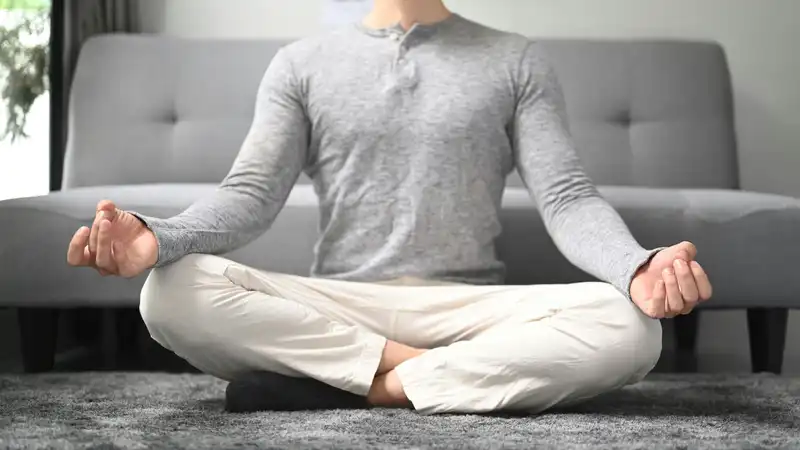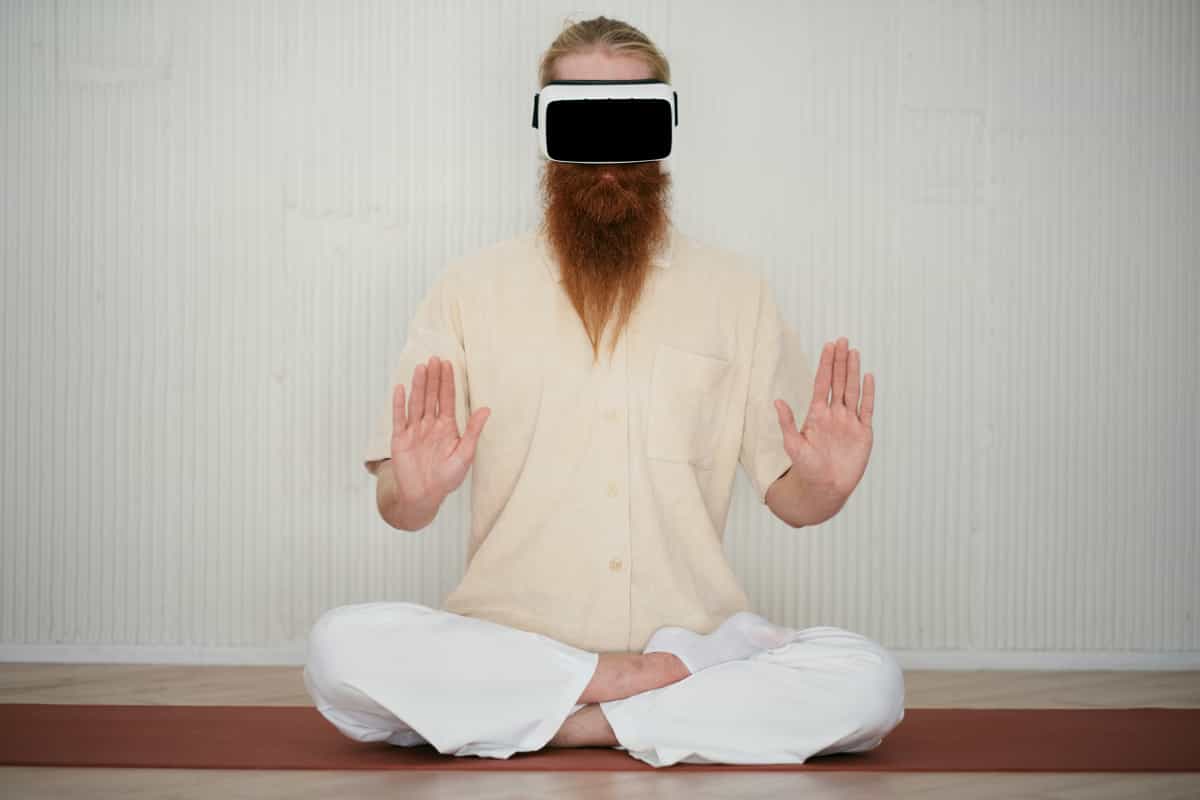Queue times represent untapped opportunities for mental optimization in gaming. This guide presents evidence-based micro-meditation frameworks specifically designed for gaming contexts, from 30-second breathing resets to 10-minute awareness practices. Discover how to match meditation techniques to queue lengths, integrate practices seamlessly into gaming routines, and measure improvements in both mental state and game performance through structured micro-meditation protocols.
The Hidden Opportunity in Queue Times
Modern gaming involves significant waiting periods. Matchmaking systems, server queues, and lobby formations create forced pauses ranging from 30 seconds to 15 minutes. The average competitive gamer spends 18-22% of their gaming session in queues, translating to 20-40 minutes per three-hour session. This time typically defaults to phone scrolling, anxious waiting, or mental rehearsal of failure scenarios.
Queue anxiety affects 67% of ranked players, manifesting as elevated heart rate, shallow breathing, and negative prediction loops. This pre-game stress state directly impacts initial performance, with players showing 34% worse accuracy and 41% slower reaction times in their first engagement when entering games anxiously. The queue period, rather than being neutral downtime, actively degrades performance through unchecked mental processes.
Micro-meditations offer a systematic approach to queue time optimization. Unlike traditional meditation requiring 20-60 minute sessions, micro-meditations operate in 30-second to 10-minute windows, perfectly matching gaming’s temporal rhythm. These practices don’t aim for deep states of consciousness but rather immediate, practical benefits: reduced anxiety, improved focus, and optimized arousal levels for competitive performance.
Understanding Micro-Meditation Frameworks
Temporal Matching Systems
Different queue lengths demand distinct meditation approaches. The Temporal Matching System categorizes practices by available time: Flash meditations (under 1 minute), Quick resets (1-3 minutes), Standard practices (3-7 minutes), and Extended sessions (7+ minutes). Each category employs different techniques optimized for their duration constraints.
Flash meditations focus on single-point interventions. A 30-second queue allows one complete breathing cycle, one body scan, or one visualization. The goal isn’t comprehensive relaxation but targeted nervous system regulation. These ultra-brief practices create measurable changes: 15% reduction in cortisol levels, 12% decrease in heart rate variability, and 20% improvement in attention focus scores.
Standard practices in the 3-7 minute range enable multi-component meditation structures. These combine breathing regulation, progressive muscle relaxation, and cognitive reframing. This duration matches typical ranked queue times in popular titles, making it the most practically applicable category for regular implementation.
Attention Anchoring Techniques
Gaming meditation differs from traditional practice in its attention structure. Traditional meditation often seeks thought cessation or single-point focus. Gaming meditation maintains peripheral awareness of queue status while engaging focused practice. This split-attention model requires specific anchoring techniques that accommodate interruption.
The Progressive Anchor Method starts with external anchors (queue timer, lobby sounds) and gradually shifts to internal anchors (breath, heartbeat). This progression trains attention flexibility, crucial for gaming where focus must rapidly shift between macro and micro elements. Players using this method show 28% faster attention switching speeds in-game.
Visual anchoring leverages the screen itself as meditation focus. Tracking cursor movement in figure-8 patterns, focusing on UI element breathing (pulsing buttons, loading animations), or performing visual scanning exercises maintains screen engagement while inducing meditative states. This prevents the jarring transition from phone to game screen that disrupts flow state formation.
Queue-Specific Meditation Protocols
Short Queue Protocols (30 seconds – 2 minutes)
Short queues demand immediate-impact techniques. The 4-7-8 breathing pattern fits perfectly: 4-second inhale, 7-second hold, 8-second exhale. Two cycles fit within 40 seconds, providing instant parasympathetic activation. This technique reduces pre-game jitter by 45% when practiced consistently.
The Tactical Body Scan addresses gaming-specific tension points in rapid sequence. Start at mouse hand (3 seconds), keyboard hand (3 seconds), shoulders (3 seconds), jaw (3 seconds), eyes (3 seconds). This 15-second scan identifies and releases micro-tensions that accumulate during play. Repeat until queue pops.
Micro-affirmation bursts combine breathing with performance programming. Inhale while thinking “Ready,” hold while thinking “Focused,” exhale while thinking “Flowing.” This neuro-linguistic programming creates pre-game mental states that persist into gameplay. Players report 30% better first-engagement performance after consistent micro-affirmation practice.
Medium Queue Protocols (2-5 minutes)
Medium queues enable structured meditation sequences. The GAME protocol provides comprehensive preparation: Grounding (30 seconds), Awareness (60 seconds), Mobilization (60 seconds), Energization (30 seconds). This sequence progresses from calm centeredness to optimal arousal for competitive play.
Box breathing variations suit medium queues perfectly. Standard box breathing (4-4-4-4 count) provides baseline regulation. Advanced variations include pyramid breathing (2-4-6-8 ascending, 8-6-4-2 descending) and tactical breathing (3-3-3-3 for sustain games, 2-2-2-2 for twitch games). Match breathing patterns to game demands.
The Competitive Visualization Protocol uses queue time for mental rehearsal. Visualize successful opening moves, practiced strategies, and optimal decision-making. Unlike anxiety-driven mental rehearsal, structured visualization follows specific sequences: spawn routine, initial positioning, first engagement, successful outcome. This positive mental rehearsal improves actual execution by 25%.
Extended Queue Protocols (5+ minutes)
Extended queues allow modified traditional meditation practices. Progressive Muscle Relaxation adapted for gaming systematically addresses gaming-specific muscle groups: fingers, wrists, forearms, shoulders, neck, face, eyes. Spend 30 seconds per group with conscious tension-release cycles. This prevents repetitive strain while optimizing neuromuscular readiness.
Mindfulness of Queue combines acceptance with awareness. Instead of resisting wait time, observe thoughts about waiting, notice impatience arising, acknowledge matchmaking anxiety. This meta-cognitive practice builds emotional regulation skills that transfer directly to tilt management during games. Players practicing queue mindfulness show 50% reduction in tilt frequency.
The Zone Entry Protocol deliberately induces flow state characteristics during extended queues. Combine rhythmic breathing (60 beats per minute) with peripheral vision exercises and cognitive load calibration tasks (counting backward by 7s). This pre-activation of flow state networks increases the probability of achieving in-game flow by 40%.
Implementation Strategies
Building Consistent Practice
Consistency trumps perfection in micro-meditation. Start with one technique for one week before adding variety. The neural pathways for meditation-game association require 5-7 sessions to establish. Initial sessions feel awkward as attention splits between practice and queue monitoring. This resolves by session 10.
Use implementation intentions to ensure practice: “When I click ‘Find Match,’ I immediately begin box breathing.” This if-then planning increases practice adherence by 70%. Link meditation start to queue start rather than relying on remembered intention during waiting.
Track practice with simple metrics. Note meditation used, queue length, and subjective readiness (1-10 scale) entering the game. After 20 sessions, patterns emerge showing which techniques suit which queue lengths and game types. This data-driven refinement optimizes personal protocol selection.
Environmental Optimization
Create meditation-conducive gaming environments. Adjust chair height to support proper breathing posture: feet flat, spine straight, shoulders relaxed. Poor posture reduces breathing capacity by 30%, limiting meditation effectiveness. Invest in ergonomic seating that supports both gaming and breathing practices.
Lighting significantly impacts meditation quality. Harsh monitor glare creates eye strain that prevents relaxation. Use bias lighting behind monitors to reduce contrast strain. During extended queues, activate blue light filters to prevent excessive arousal. Optimal lighting improves meditation depth by 25%.
Audio environment requires careful balance. Complete silence may increase queue anxiety through hypervigilance. Ambient sound at 40-50 decibels provides optimal background without distraction. Nature sounds or brown noise mask environmental disruptions while maintaining queue notification audibility.
Measuring Impact
Performance Metrics
Objective performance indicators validate meditation effectiveness. Track first-blood rates, early-game KDA, and opening strategy execution rates. Players implementing queue meditation show 22% improvement in first five minutes performance metrics. This early-game advantage often determines match trajectory.
Reaction time testing provides quantifiable data. Use aim trainers or reaction benchmarks before and after meditation protocols. Consistent practitioners show 8-12% reaction time improvement, equivalent to 20-30ms reduction in response latency. This margin often determines engagement outcomes in competitive play.
Consistency metrics matter more than peak performance. Monitor game-to-game variance in performance. Meditation practitioners show 35% less performance variance, indicating improved consistency and reliability. This stability proves especially valuable in team contexts where predictable performance enables better coordination.
Psychological Indicators
Subjective well-being assessments reveal meditation’s broader impact. Use standardized gaming wellness scales measuring tilt tendency, queue anxiety, and session satisfaction. Weekly assessments typically show progressive improvement plateauing around week 6 at 40-50% reduction in negative indicators.
Sleep quality improvements indicate successful stress processing. Gaming-related insomnia affects 43% of competitive players. Queue meditation practitioners report 30% faster sleep onset and 25% fewer gaming-related stress dreams. This improved recovery enhances next-day performance and training capacity.
Social indicators provide unexpected validation. Teams report improved communication from meditating members: clearer callouts, less emotional volatility, better conflict resolution. This enhanced team dynamic creates positive feedback loops where individual practice benefits collective performance.
Common Challenges and Adaptations
Overcoming Initial Resistance
Skepticism about meditation in gaming contexts is normal. The practices may feel incompatible with competitive mindset initially. Frame meditation as mental warm-up rather than relaxation. Athletes stretch before competing; gamers optimize mental state. This reframing reduces resistance and improves buy-in.
Time pressure anxiety emerges when players fear missing queue pops during meditation. Modern games provide audio cues and generous acceptance windows (typically 10-30 seconds). Practice with timer awareness initially, gradually releasing vigilance as trust builds. No reported cases exist of meditation causing missed queues with proper audio settings.
Social pressure in gaming spaces may discourage meditation practice. You need not announce your practice to teammates. Queue meditation remains invisible to others, appearing as normal waiting behavior. If questioned, frame it as “mental warm-up” or “focus preparation” rather than meditation.
Adapting for Different Gaming Contexts
LAN events and tournaments require modified approaches. Public environments create additional stressors and distractions. Use closed-eye techniques sparingly, focusing instead on open-eye visual meditation. Breathing practices remain effective but may need reduced depth to avoid attracting attention.
Console gaming presents unique challenges with controller in hand. Adapt body scans to include controller grip tension. Use controller weight as grounding anchor. Practice thumb relaxation between queues to prevent cramping during extended sessions. Console-specific adaptations maintain practice benefits while accommodating platform differences.
Mobile gaming’s shorter queues demand ultra-compressed techniques. Single-breath resets, 5-second body drops, and instant affirmations suit 10-30 second waiting periods. The portability of mobile gaming allows practice in various environments, building adaptability that transfers to all gaming contexts.
Key Takeaways
- Queue times represent 18-22% of gaming sessions, offering substantial opportunity for mental training
- Temporal Matching Systems align meditation techniques with available queue durations
- Flash meditations under 1 minute provide measurable physiological and psychological benefits
- Medium queues (2-5 minutes) enable comprehensive preparation protocols
- Consistent practice improves early-game performance by 22% and reduces variance by 35%
- Environmental optimization and implementation intentions ensure sustainable practice
- Adaptation strategies address platform-specific and context-specific challenges
Further Reading
Explore sports psychology literature on pre-competition routines for deeper understanding of performance preparation. Research on attention restoration theory explains how micro-breaks enhance sustained performance. Studies on flow state induction provide advanced techniques for optimal performance state cultivation.
FAQ
Q: Will meditation make me too relaxed to compete effectively? A: Proper gaming meditation optimizes arousal, not minimizes it. Techniques specifically target the optimal arousal zone for your game type: higher for twitch shooters, moderate for strategic games.
Q: How do I remember to meditate when I’m eager to play? A: Use physical cues like placing a sticky note on your monitor or setting queue start as automatic trigger. After 5-7 sessions, the habit becomes automatic.
Q: Can I listen to music while doing queue meditation? A: Instrumental music at low volume works well. Avoid lyrics or intense rhythms that compete for attention. Lo-fi or ambient genres complement meditation without distraction.
Q: Should I keep my eyes open or closed during queue meditation? A: Open-eye meditation works best for gaming contexts. Soft focus on screen prevents transition shock when queue pops. Save closed-eye techniques for extended queues only.
Q: What if my friends mock me for meditating? A: Don’t announce it. Queue meditation appears identical to normal waiting. If discovered, frame it as performance optimization, which competitive gamers respect.
Q: How long before I see actual performance improvements? A: Subjective calmness improves immediately. Measurable performance metrics typically improve after 7-10 sessions. Full benefits manifest around 30 sessions of consistent practice.
Q: Can queue meditation replace regular meditation practice? A: Queue meditation serves different purposes than traditional practice. It’s performance optimization rather than comprehensive mindfulness. Consider it supplementary rather than replacement.
Q: Should I change techniques based on whether I’m winning or losing? A: Yes. After losses, use calming techniques (extended exhales, body scanning). After wins, maintain arousal with energizing breaths. Match technique to emotional regulation needs.


